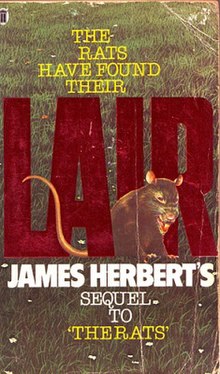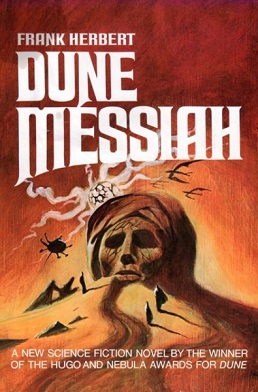
Dune Messiah is a 1969 science fiction novel by American writer Frank Herbert, the second in his Dune series of six novels. A sequel to Dune (1965), it was originally serialized in Galaxy magazine in 1969, and then published by Putnam the same year. Dune Messiah and its own sequel Children of Dune (1976) were collectively adapted by the Sci-Fi Channel in 2003 into a miniseries entitled Frank Herbert's Children of Dune.
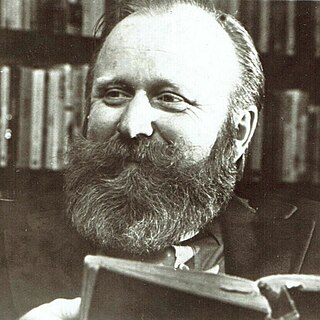
Franklin Patrick Herbert Jr. was an American science-fiction author, best known for his 1965 novel Dune and its five sequels. He also wrote short stories and worked as a newspaper journalist, photographer, book reviewer, ecological consultant, and lecturer.

Horror is a genre of speculative fiction that is intended to disturb, frighten, or scare. Horror is often divided into the sub-genres of psychological horror and supernatural horror, which are in the realm of speculative fiction. Literary historian J. A. Cuddon, in 1984, defined the horror story as "a piece of fiction in prose of variable length ... which shocks, or even frightens the reader, or perhaps induces a feeling of repulsion or loathing". Horror intends to create an eerie and frightening atmosphere for the reader. Often the central menace of a work of horror fiction can be interpreted as a metaphor for larger fears of a society.

Kevin James Anderson is an American science fiction author. He has written spin-off novels for Star Wars, StarCraft, Titan A.E. and The X-Files, and with Brian Herbert is the co-author of the Dune prequel series. His original works include the Saga of Seven Suns series and the Nebula Award–nominated Assemblers of Infinity. He has also written several comic books, including the Dark Horse Star Wars series Tales of the Jedi written in collaboration with Tom Veitch, Dark Horse Predator titles, and The X-Files titles for Topps. Some of Anderson's superhero novels include Enemies & Allies, about the first meeting of Batman and Superman, and The Last Days of Krypton, telling the story of how Superman's planet Krypton came to be destroyed.

Rosemary's Baby is a 1967 horror novel by American writer Ira Levin; it was his second published book. It was the best-selling horror novel of the 1960s, selling over four million copies. The high popularity of the novel was a catalyst for a "horror boom", and horror fiction would achieve enormous commercial success in its wake.

Goosebumps is a series of children's horror novels written by American author R. L. Stine. The protagonists in these stories are teens or pre-teens who find themselves in frightening circumstances, often involving the supernatural, the paranormal or the occult. Between 1992 and 1997, sixty-two books were published under the Goosebumps umbrella title. R. L. Stine also wrote various spin-off series, including, Goosebumps Series 2000, Give Yourself Goosebumps, Tales to Give You Goosebumps, Goosebumps Triple Header, Goosebumps HorrorLand, Goosebumps Most Wanted and Goosebumps SlappyWorld. Additionally, there was a series called Goosebumps Gold that was never released.
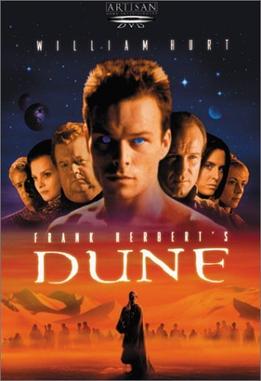
Frank Herbert's Dune is a 2000 science fiction television miniseries, based on the 1965 novel of the same title by Frank Herbert. It is written for the screen and directed by John Harrison, and stars Alec Newman as Paul Atreides, William Hurt as Duke Leto Atreides, and Saskia Reeves as Lady Jessica, along with Ian McNeice, Julie Cox, and Giancarlo Giannini. It was an international co-production between the American cable network Syfy, and companies in Germany, Canada, and Italy. This is the second overall filmed adaptation of Herbert’s novel, following the 1984 film directed by David Lynch, and preceding Denis Villeneuve’s two-part film adaptation.

James John Herbert, OBE was an English horror writer. A full-time writer, he also designed his own book covers and publicity. His books have sold 54 million copies worldwide, and have been translated into 34 languages, including Chinese and Russian.
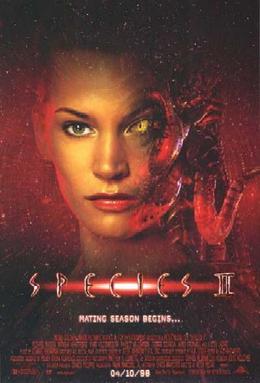
Species II is a 1998 American science fiction horror thriller film directed by Peter Medak. The film is a sequel to Species (1995) and the second installment in the Species series. The film stars Michael Madsen, Natasha Henstridge, Marg Helgenberger, Mykelti Williamson, George Dzundza, James Cromwell and Justin Lazard. In addition to Madsen and Helgenberger reprising their roles, Henstridge also returned for the sequel as a new character. The plot has Patrick Ross, the astronaut son of a senator, being infected by an extraterrestrial organism during a mission to Mars and causing the deaths of many women upon his return. To stop him, the scientists who created the human-extraterrestrial hybrid Sil in the original Species try using a more docile clone of hers, Eve.
Dune is an American science fiction media franchise that originated with the 1965 novel Dune by Frank Herbert and has continued to add new publications. Dune is frequently described as the best-selling science fiction novel in history. It won the inaugural Nebula Award for Best Novel and the Hugo Award in 1966 and was later adapted into a 1984 film, a 2000 television miniseries, and a two-part film series with the first film in 2021 and a sequel in 2024. Herbert wrote five sequels, the first two of which were concomitantly adapted as a 2003 miniseries. Dune has also inspired tabletop games and a series of video games. Since 2009, the names of planets from the Dune novels have been adopted for the real-world nomenclature of plains and other features on Saturn's moon Titan.

James Wan is an Australian filmmaker. He has primarily worked in the horror genre as the co-creator of the Saw and Insidious franchises and the creator of The Conjuring Universe. The lattermost is the highest-grossing horror franchise at over $2 billion. Wan is also the founder of film and television production company Atomic Monster.

"Herbert West–Reanimator" is a horror short story by American writer H. P. Lovecraft. It was written between October 1921 and June 1922. It was first serialized in February through July 1922 in the amateur publication Home Brew. The story was the basis of the 1985 horror film Re-Animator and its sequels, in addition to numerous other adaptations in various media.
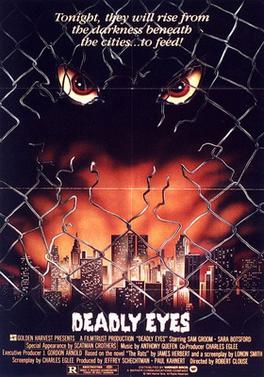
Deadly Eyes is a 1982 Canadian horror film directed by Robert Clouse, very loosely based on the 1974 horror novel The Rats by James Herbert. The story revolves around giant black rats who begin eating the residents of Toronto after ingesting contaminated grain.
The Amityville haunting is a modern folk story based on the true crimes of Ronald DeFeo Jr. On November 13, 1974, DeFeo shot and killed six members of his family at 112 Ocean Avenue, Amityville, on the south shore of Long Island. He was convicted of second-degree murder in November 1975. In December 1975, George and Kathy Lutz and their three children moved into the house. After 28 days, the Lutzes left the house, claiming to have been terrorized by paranormal phenomena while living there. The house became the subject of numerous investigations by paranormal researchers, journalists, and skeptics, including Ed and Lorraine Warren. These events served as the historical basis for Jay Anson's 1977 novel The Amityville Horror, which was followed by a number of sequels and was adapted into a film of the same name in 1979. Since then, many films have been produced that draw explicitly, to a greater or lesser extent, from these historical and literary sources. As Amityville is a real town and the stories of DeFeo and the Lutzes are historical, there can be no proprietary relationship to the underlying story elements associated with the Amityville haunting. As a result of this, there has been no restriction on the exploitation of the story by film producers, which is the reason that most of these films share no continuity, were produced by different companies, and tell widely varying stories.
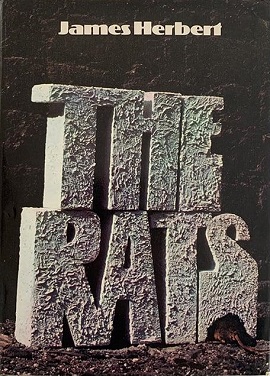
The Rats (1974) is a horror novel by British writer James Herbert. This was Herbert's first novel and included graphic depictions of death and mutilation.
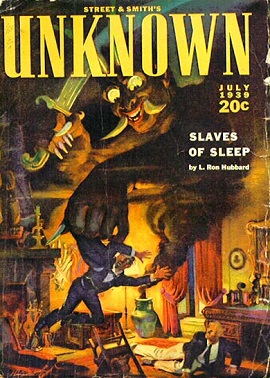
Slaves of Sleep is a science fantasy novel by American writer L. Ron Hubbard. It was first published in book form in 1948 by Shasta Publishers; the novel originally appeared in a July 1939 issue of pulp fantasy fiction magazine Unknown. The novel presents a story in which a man travels to a parallel universe ruled by Ifrits. The protagonist takes on the identity of a human in this dimension, and becomes involved in the politics of Ifrits in this fictional "Arabian Nights" world.

Doctor Sleep is a 2013 horror novel by American writer Stephen King and the sequel to his 1977 novel The Shining. The book reached the first position on The New York Times Best Seller list for print, ebook, and hardcover fiction. Doctor Sleep won the 2013 Bram Stoker Award for Best Novel.
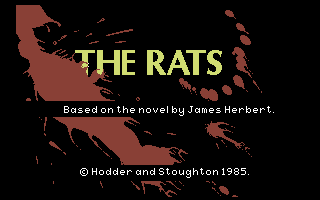
The Rats is a survival horror text adventure for the Commodore 64 and ZX Spectrum computers. It is based on the 1974 novel The Rats by James Herbert. The game was programmed by GXT, and published by Hodder & Stoughton, who were the publishers of James Herbert's book The Rats. An Amstrad CPC version was planned, but was never released.

Domain (1984) is a horror novel by British writer James Herbert. The third and final novel of Herbert's Rats trilogy, it tells the story of how the rats have not only survived but begin to take over London from humanity in the aftermath of a nuclear strike.
